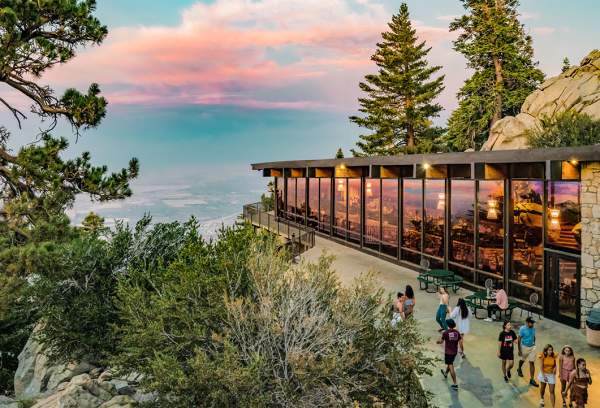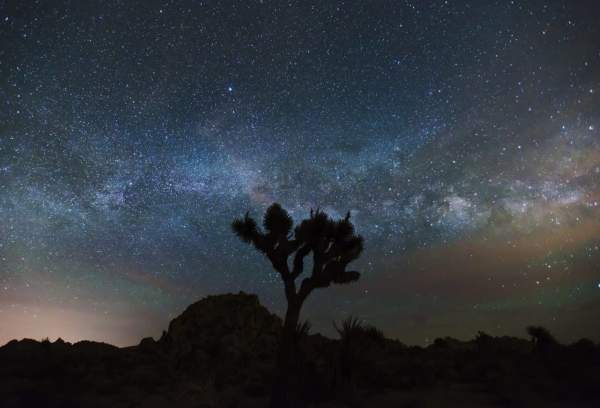Ancestors of the Agua Caliente people thrived in Tahquitz Canyon. As with the numerous canyons in the valley, they were able to hunt, gather and utilize the water to thrive in the Palm Springs area. Their village sites date back thousands of years.
The Legend of Tahquitz
Tahquitz was the first shaman created by Mukat, the creator of all things. He had much power, and in the beginning he used his power for the good of all people. Tahquitz became the guardian spirit of all shamans and he gave them power to do good. But over time, Tahquitz began to use his power for selfish reasons. He began to use his power to harm the Cahuilla People.
The people became angry, and they banished Tahquitz to this canyon that now bears his name. He made his home high in the San Jacinto Mountains in a secret cave below the towering rock known today as Tahquitz Peak. It is said that his spirit still lives in this canyon.
Looking Back
Prior to 1969, people were generally able to hike, camp and ride their horses through the canyon with ease. It was a popular hiking area for years. In fact, the falls can be seen in the 1937 Frank Capra film "Lost Horizon," and tourists paid to ride burros up to the falls in the late 1940s and early 1950s. The local horse club known as Desert Riders used the trails extensively.
Because it was so popular, in 1964, the tribal council petitioned the city to lease the land. In a letter to Mayor Frank Bogert, Council member Eileen Miguel cited vandalism in the canyon as the reason. "Our tribal council has decided that this area has sufficient tourist value and attraction to justify affirmative action by the City of Palm Springs to keep it open to the public." Eileen writes. "We have, therefore, decided that you should be allowed to lease this area for the benefit it will generate for the city. Let us know whether you would like to commence negotiations for a long-term lease covering Tahquitz Canyon."
The city did not enter a lease agreement, and the canyon remained open.
One Easter Weekend
On Easter weekend in 1969, things came to a head. Palm Springs was visited by more than 10,000 young people who were living like "hippies." A two-day "Year of Love" rock show touched off a near-riot. It was said that 3,500 campers occupied the canyon. Numerous arrests of these bearded, beaded, and bare nomads were made. From the air, it looked like nothing but sleeping bags and campfires. It ultimately ended with police clearing out the campers from Tahquitz Canyon.
That same month, Jim Morrison of The Doors shot a privately funded 35mm short film, "HWY: An American Pastoral, " partially filmed in Tahquitz Canyon. The film was never officially released.
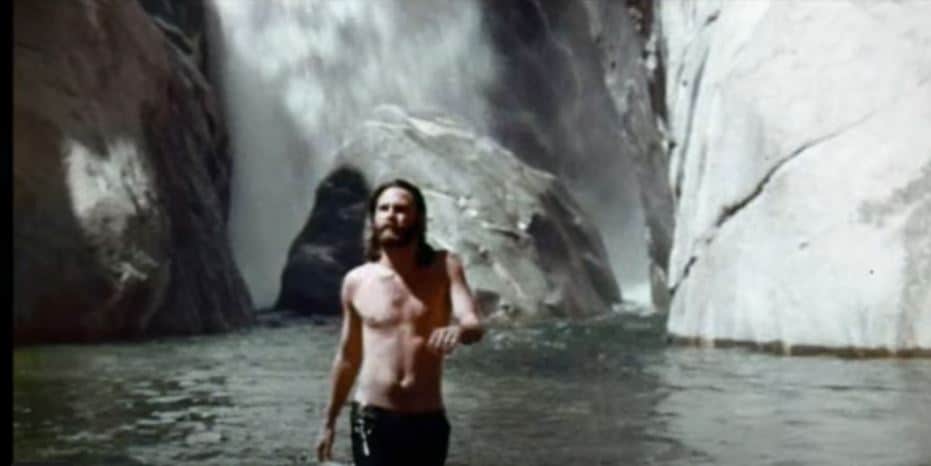
The Doors - Jim Morrison at Tahquitz Waterfall
The Agua Caliente closed the access point to the canyon due to significant damage, disrespect, and trespassing. Visitors were no longer welcome. Trespassers were arrested and fined or served time in jail. The Palm Springs Mounted Police helped keep the canyon clear. It remained closed for the next 30 years. But its location, so close to the city center, made it a target for those who wanted to hide or had nowhere to go.
Building a Visitor Center
The tribe began considering reopening Tahquitz Canyon in 1997 and spent a year cleaning the land and rocks. The cleanup was initiated to address the litter and debris that had accumulated over time, threatening the canyon's natural beauty and environmental integrity. This endeavor aimed to restore and preserve the natural habitat, ensuring that future generations could continue appreciating its unique flora and fauna.

After reviving Tahquitz Canyon, the tribe realized trying to keep the canyon private would probably not be sustainable. However, they also knew they needed a way to preserve, protect, and cherish this remarkable natural treasure over time.
To that end, they decided to build a Visitor Center as a gateway to the canyon. However, there was no road, parking, utilities, nothing... not even a dedicated site for the building.
In 1999, they enlisted the help of architect Lance O’Donnell. He proposed placing the Tahquitz Canyon Visitor Center toward the front of the land to prevent undue interference. O'Donnell's design philosophy revolves around creating structures that embrace the land's natural contours, and the Tahquitz Canyon Visitor Center is a prime example of his visionary approach. The use of earth tones and natural materials further enhances the integration of the architecture into the landscape.
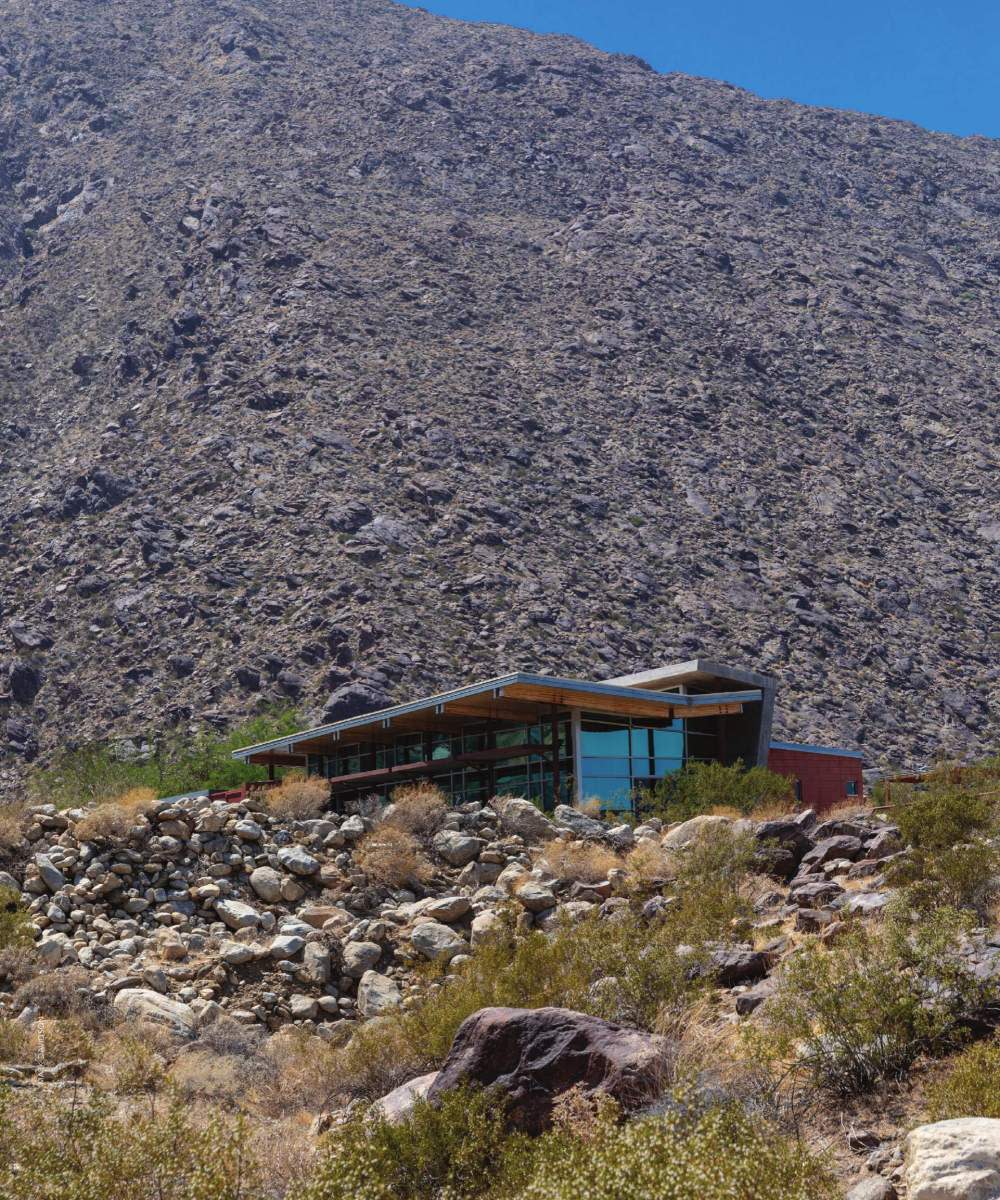
The building is staged like an observation deck. He added a bridge to reach the entry to create a sense of anticipation. The midcentury design includes modern materials such as concrete block, glass, and steel to harmonize the design. It also helps protect against wildfires.

The 2,500-square-foot building does not overwhelm the majestic San Jacinto mountain backdrop. As a modern sculpture, it presents a fascinating contrast to the canyon's spectacular beauty.
Tahquitz Canyon Visitor Center Opens
The Tahquitz Visitor Center opened in 2001. As the gateway to the canyon, it allows the Agua Caliente people to tell their story before visitors enter and invites them to learn about their culture and history. This time, there are rules: no pets, fires, smoking, alcohol, bikes, drones, firearms, or loud music. Lingering after dark is also forbidden.
The center houses a wealth of information about the region's history, ecology, and indigenous culture. The space is thoughtfully designed to foster a connection between visitors and the surrounding environment, creating a memorable and immersive experience.
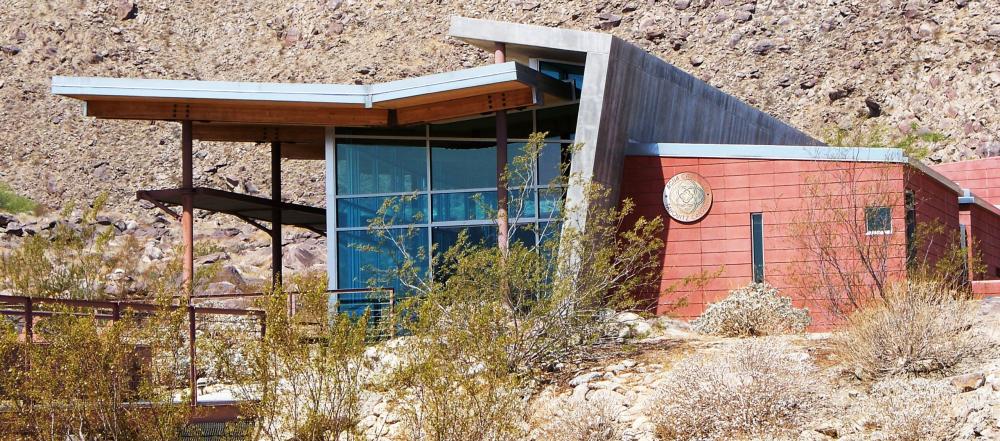
As you step inside the visitor center, you'll be greeted by knowledgeable staff passionate about sharing the stories of Tahquitz Canyon and its significance to the Cahuilla people. Exhibits display artifacts, photographs, and interactive displays that shed light on the traditions, folklore, and daily life of the Native American community. A short film also explains the canyon's history, archaeology, and ethnological significance. It describes the legend of Tah-kwish.
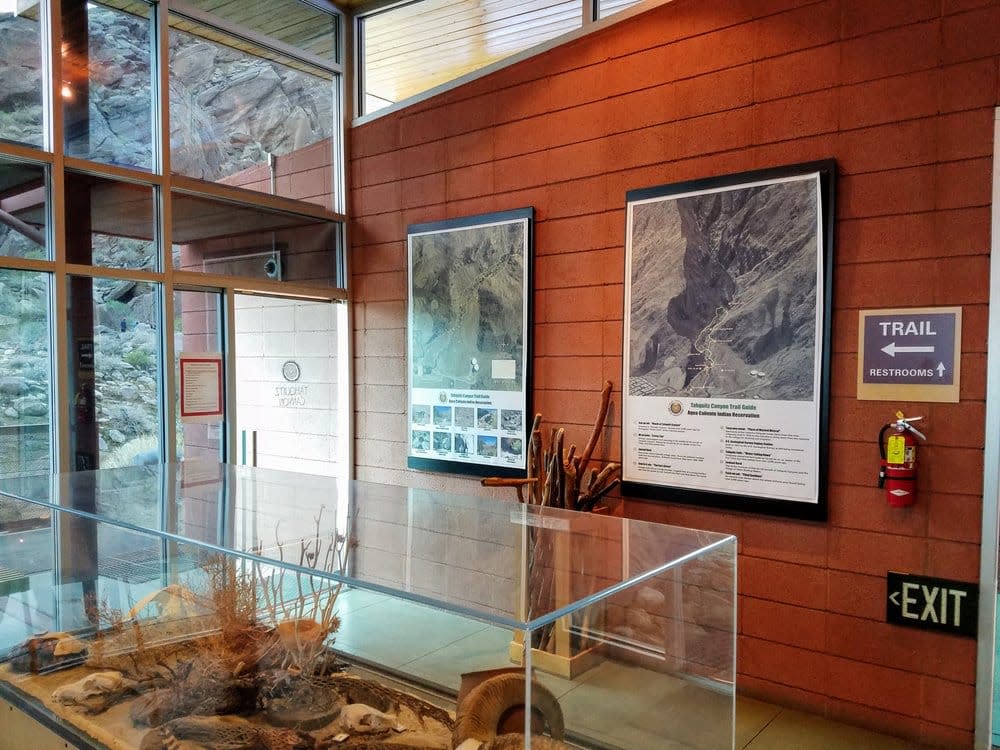
Whether you are seeking a deeper connection with nature, a journey into the past, or simply a serene escape from the bustle of city life, the Tahquitz Canyon Visitor Center beckons you. In this awe-inspiring setting, you will discover the profound beauty of the desert landscape and gain a newfound appreciation for the rich history and enduring culture of the Cahuilla people.
Tahquitz Guided Hikes
The center offers guided hikes through the canyon, which allow visitors to explore its natural beauty while learning about the plants, animals, and geology that make this area unique. The hikes are free with paid admission and last about 2.5 hours.

National Register of Historical Places
Tahquitz Canyon, along with Indian Canyons, is listed on the National Register of Historic Places.
About Architect Lance O’Donnell
Lance began his career working with Ana Escalante at the firm Escalante Architects. Shortly thereafter, Palm Springs' beloved architect, Donald Wexler, was preparing to retire. He was searching for a firm to refer his longtime clients to, and when he asked O'Donnell and Escalante, they jumped at the opportunity.
It was the start of a long relationship. He later helped remodel Wexler's family home and consulted on constructing Wexler's last plan in Palm Springs in 2015. For that project, he was awarded “Remodel of the Year” in 2009 by the Palm Springs Modernism Committee. Ana later left the firm to start a family, and Lance founded O2 Architecture.
O’Donnell has completed other notable architecture projects in Palm Springs.
Palm Springs Visitor Center
In 2003, the conversion of an historically significant modern architectural landmark, Albert Frey's tramway gas station (1963), into a functional and signature visitor's center and entry point for the city of palm entry point for the city of Palm Springs. Re-planning of the site allows for greater access, parking, and visibility.
A new 400-square-foot bathroom facility is situated behind the main structure, allowing minimal disturbance to the existing architectural gem. The new bathrooms incorporate prefabricated panel walls with clerestory natural lighting, generous shade canopies, and filtered glass screen walls that provide both safety and privacy. The design embraces a distinct modern aesthetic yet remains complementary to the strong shape and profile of the existing building.
Orbit Inn
The project involved restoring and renovating a 10-unit mid-century hotel in the historic Tennis Club District. The architectural intervention relied on weaving programmatic spaces in the existing building to provide a setting for enjoying a Palm Springs desert weekend. A new entry, spa, and open bar canopy relate to the existing architecture while avoiding historical quotations. In addition, there was a thorough system upgrade as well as interior restoration of the suites and outdoor courtyards.
Steel House
Originally built in 1962, the work included extensive demolition of past additions and recovering the original structure, bathrooms, carport, and finishes. Original panels, appliances, and built-ins were recovered and restored, and only obsolete systems, such as mechanical, plumbing, structural, and electrical, were replaced to meet current code.
The total building footprint was reduced to its original 1,400 SF, and new outdoor spaces were designed to reinforce the original structure's indoor-outdoor relationships.
The Waterfalls of Palm Springs Canyons
Tahquitz Canyon
Indian Canyons Trails Guide
Weekend Getaway in Palm Springs: Our Perfect Itinerary
- 5 min read
Palm Springs is the perfect backdrop for everything from romantic…
Your Complete Guide to Palm Springs Pool Day Passes
- 10 min read
Palm Springs Hotel Pools with Day Passes, Cabanas & Loungers…
Stargazing in Palm Springs
- 3 min read
Spend the day exploring sun-warmed trails, then stick around after…
Red Jeep Royalty: How One Family Built the Iconic Red Jeep Tours
- 5 min read
What’s a girl to do when her mom pioneers the first Jeep tour…
The Untold Stories Behind Palm Springs Street Names
- 8 min read
Discover the Meaning Behind Palm Springs Street Names Vista Chino…
